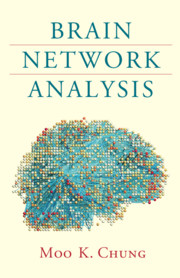
-
Select format
-
- Publisher:
- Cambridge University Press
- Publication date:
- 10 June 2019
- 27 June 2019
- ISBN:
- 9781316882610
- 9781107184862
- Dimensions:
- (228 x 152 mm)
- Weight & Pages:
- 0.64kg, 338 Pages
- Dimensions:
- Weight & Pages:
You may already have access via personal or institutional login
Book description
This tutorial reference serves as a coherent overview of various statistical and mathematical approaches used in brain network analysis, where modeling the complex structures and functions of the human brain often poses many unique computational and statistical challenges. This book fills a gap as a textbook for graduate students while simultaneously articulating important and technically challenging topics. Whereas most available books are graph theory-centric, this text introduces techniques arising from graph theory and expands to include other different models in its discussion on network science, regression, and algebraic topology. Links are included to the sample data and codes used in generating the book's results and figures, helping to empower methodological understanding in a manner immediately usable to both researchers and students.
Reviews
'This book is a must-read for students and researchers in brain network analysis. It is unique across many fronts. First, it weaves together the important background material in statistics, computational mathematics and algebraic topology. Second, it accomplishes the dual role of a research monograph and a textbook reference. The author, an expert in this field, conveys his enthusiasm for brain network analysis and lays down the most essential mathematical and statistical foundations for future advances.'
Hernando Ombao - King Abdullah University of Science and Technology, Saudi Arabia
Contents
Metrics
Altmetric attention score
Full text views
Full text views help Loading metrics...
Loading metrics...
* Views captured on Cambridge Core between #date#. This data will be updated every 24 hours.
Usage data cannot currently be displayed.
Accessibility standard: Unknown
Why this information is here
This section outlines the accessibility features of this content - including support for screen readers, full keyboard navigation and high-contrast display options. This may not be relevant for you.
Accessibility Information
Accessibility compliance for the PDF of this book is currently unknown and may be updated in the future.


